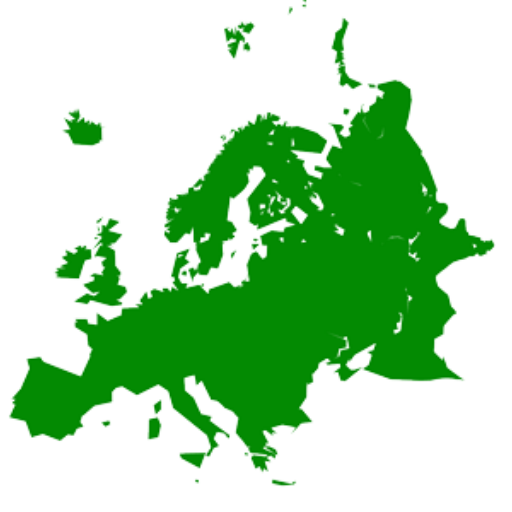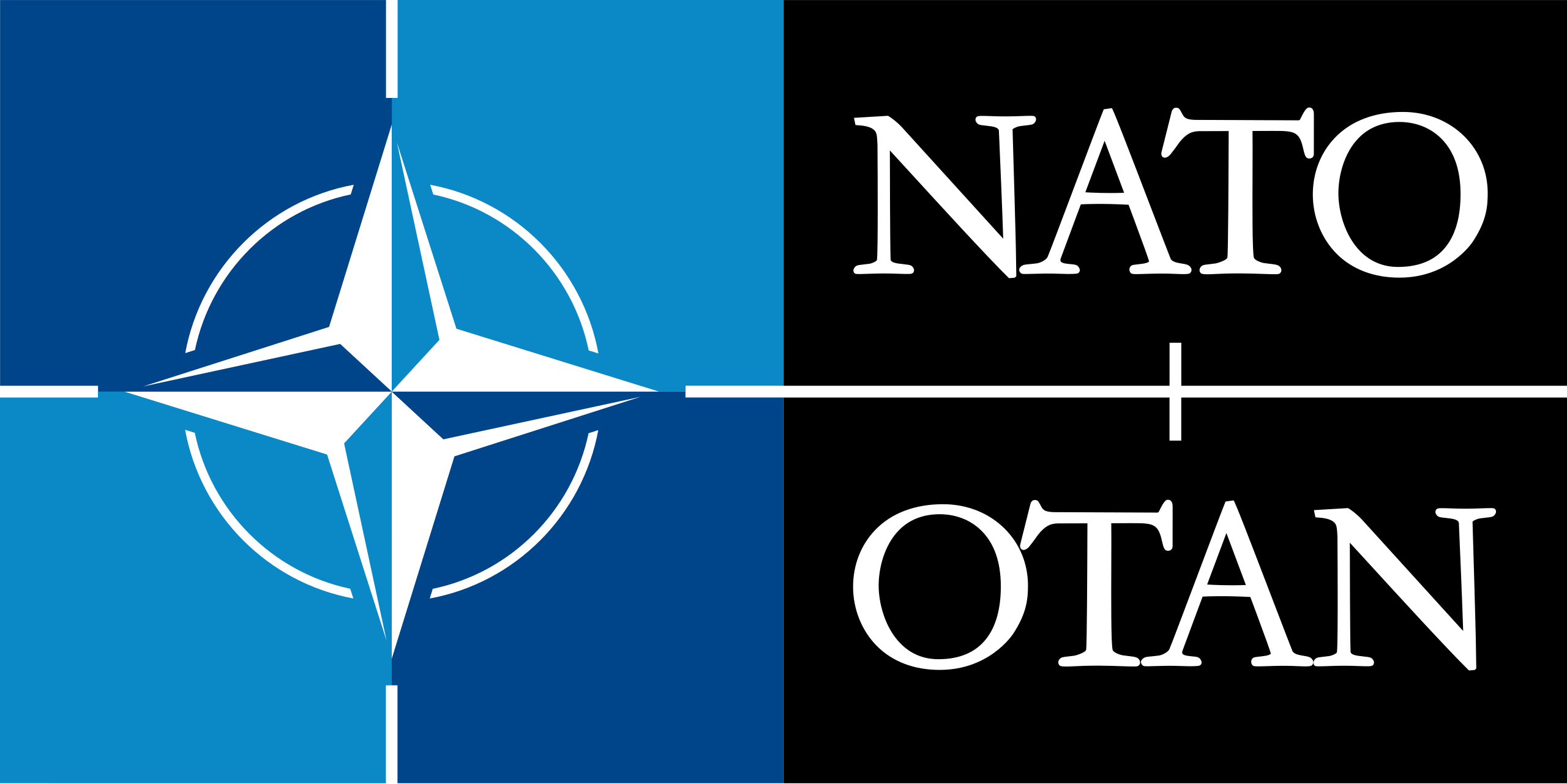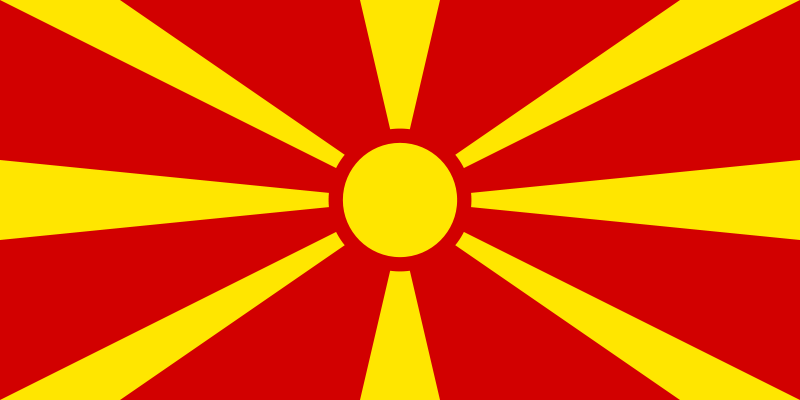

Nordmazedonien (mazedonisch Северна Македонија Severna Makedonija, albanisch Maqedonia e Veriut; amtlich Republik Nordmazedonien, mazedonisch Република Северна Македонија Republika Severna Makedonija, albanisch Republika e Maqedonisë së Veriut; bis 2019: Republik Mazedonien) ist ein Binnenstaat in Südosteuropa. Er umfasst den nördlichen Teil der historischen Region Makedonien.
Seit dem 27. März 2020 ist Nordmazedonien Mitglied der NATO sowie bereits seit 2005 ein Beitrittskandidat der Europäischen Union (EU). Nordmazedonien hat eine der schwächsten Volkswirtschaften Europas und befindet sich in einem Transformationsprozess, sowohl wirtschaftlich als auch politisch. Das Land hat mit hohen Arbeitslosenzahlen und einer schwachen Infrastruktur sowie fehlenden Investitionen zu kämpfen.
Neben slawischen Mazedoniern, die etwa 64 % der Gesamtbevölkerung stellen, gibt es eine große Minderheit an Albanern (25 %). Auch kleinere Minderheiten von Türken (3,85 %), Roma (2,66 %), Serben (1,78 %), Bosniaken (0,84 %) und Aromunen/Meglenorumänen (0,48 %) sowie anderen Ethnien (1,04 %) sind vorhanden. Durch diese Situation gab und gibt es immer wieder ethnisch motivierte Konflikte, vor allem zwischen Mazedoniern und Albanern. Nach den bürgerkriegsähnlichen Zuständen 2001 und dem danach unterschriebenen Friedensvertrag hat sich die Gesamtlage im Land deutlich verbessert. Eine gesellschaftliche Gleichstellung aller Ethnien ist jedoch immer noch nicht erreicht.
North Macedonia[c] (before 2019, Macedonia), officially the Republic of North Macedonia,[d] is a country in the Balkan Peninsula in Southeast Europe. It gained its independence in 1991 as one of the successor states of Yugoslavia. A landlocked country, North Macedonia has borders with Kosovo[e] to the northwest, Serbia to the northeast, Bulgaria to the east, Greece to the south, and Albania to the west.[8] It constitutes approximately the northern third of the larger geographical region of Macedonia. The capital and largest city, Skopje, is home to roughly a quarter of the country's 2.06 million inhabitants. The majority of the residents are ethnic Macedonians, a South Slavic people. Albanians form a significant minority at around 25%, followed by Turks, Romani, Serbs, Bosniaks, and Aromanians.
The history of the region dates back to antiquity, beginning with the kingdom of Paeonia, presumably a mixed Thraco-Illyrian polity.[9] In the late sixth century BC, the area was incorporated into the Persian Achaemenid Empire, then annexed by the kingdom of Macedonia in the fourth century BC. The Romans conquered the region in the second century BC and made it part of the much larger province of Macedonia. The area remained part of the Byzantine Empire, but was often raided and settled by Slavic tribes beginning in the sixth century of the Christian era. Following centuries of contention between the Bulgarian, Byzantine, and Serbian Empire, it was part of the Ottoman dominion from the mid-14th until the early 20th century, when, following the Balkan Wars of 1912 and 1913, the modern territory of North Macedonia came under Serbian rule.
During the First World War (1915–1918), it was ruled by Bulgaria, but after the end of the war it returned to being under Serbian rule as part of the newly formed Kingdom of Serbs, Croats and Slovenes. Later, during the Second World War (1941–1944), it was ruled by Bulgaria again, and in 1945 it was established as a constituent state of communist Yugoslavia, which it remained until its peaceful secession in 1991. The country became a member of the United Nations in April 1993, but as a result of a dispute with Greece over the name "Macedonia", it was admitted under the provisional description the former Yugoslav Republic of Macedonia[f] (abbreviated as FYR Macedonia and FYROM). In June 2018, Macedonia and Greece resolved the conflict with an agreement that the country should rename itself "Republic of North Macedonia". This renaming came into effect in February 2019.
A unitary parliamentary constitutional republic, North Macedonia is a member of the UN, NATO, Council of Europe, World Bank, OSCE, CEFTA, and the WTO. Since 2005, it has also been a candidate for joining the European Union. North Macedonia is an upper-middle-income country[12] and has undergone considerable economic reform since independence in developing an open economy. North Macedonia is a developing country, ranking 82nd on the Human Development Index, and provides a social security, universal health care system, and free primary and secondary education to its citizens.
La Macédoine du Nordb (en macédonien Северна Македонија, translitterré Severna Makedonija ; en albanais Maqedonia e Veriut), en forme longue la république de Macédoine du Nord (en macédonien Република Северна Македонија, translitterré Republika Severna Makedonija ; en albanais Republika e Maqedonisë së Veriut), est un pays d'Europe du Sud situé dans la péninsule des Balkans.
Connue de 1991 à 2019 sous le nom de « république de Macédoine » ou « ancienne république yougoslave de Macédoine » (ou par le sigle ARYM)b, ou parfois simplement « Macédoine » dans le langage courant, elle est l'un des États successeurs de la Yougoslavie, dont elle a déclaré son indépendance en 1991. Par le nom très ressemblant entre la Macédoine du Nord et la région grecque de la Macédoine, des tensions éclatent, jusqu'à une sortie de crise le 12 février 2019, où l'accord entre la nouvelle République de Macédoine du Nord et la République hellénique (qui a été validé par référendum puis ratification par les deux parlements9) entre en vigueur, et donne son nouveau nom à cet État. Ce changement de nom va ainsi lui permettre de prétendre à l'adhésion aux institutions internationales, comme l'OTAN ou l'Union européenne.
Sans accès à la mer, la Macédoine du Nord partage des frontières avec la Grèce, la Bulgarie, la Serbie, le Kosovoc et l'Albanie. Le pays, qui compte deux millions d'habitants, occupe approximativement la moitié nord de la Macédoine géographique, qui s'étend aussi en Bulgarie et en Grèce. Sa capitale et plus grande ville est Skopje, suivie par Koumanovo, Bitola, Prilep et Tetovo. Le pays est principalement montagneux et compte une cinquantaine de lacs.
Par sa position en Europe, le territoire de la république a connu de nombreuses occupations et migrations, les plus marquantes étant l'âge byzantin, l'arrivée des Slaves au VIe siècle, puis une domination ottomane longue de cinq siècles. Ces présences ont façonné une culture riche en influences, puisqu'en plus de citoyens appartenant au peuple macédonien, le pays compte d'importantes minorités albanaise, turque et rom. La Macédoine du Nord compte une majorité d'habitants chrétiens orthodoxes, mais aussi une forte communauté musulmane.
La Macédoine du Nord possède un régime politique démocratique et parlementaire. Longtemps isolée après son indépendance, elle connaît une transition difficile à l'économie de marché. Elle se classe en effet parmi les États européens avec un indice de développement humain des plus bas. L'adhésion du pays à l'Union européenne a été définie comme la principale priorité stratégique par le gouvernement macédonien en 200611. Les négociations d'adhésion ont formellement été ouvertes par le Conseil européen le 26 mars 202012.
Elle est membre de l'Organisation des Nations Unies, du Conseil de l'Europe et de l'Organisation du Traité de l'Atlantique Nord depuis peu (27 mars 20207).
La Macedonia del Nord, ufficialmente Repubblica della Macedonia del Nord (in macedone: Република Северна Македонија?, traslitterato: Republika Severna Makedonija; in albanese: Republika e Maqedonisë së Veriut), è uno Stato della penisola balcanica nell'Europa sud-orientale.
Fino al 2019 lo Stato si chiamava Repubblica di Macedonia ed è stato coinvolto in un'annosa disputa sul proprio nome con la Grecia; in base all'accordo di Prespa del giugno del 2018, nonostante il mancato raggiungimento del quorum nel referendum consultivo del 30 settembre, il parlamento macedone ha approvato nel gennaio del 2019 una modifica costituzionale per adottare il nome di Macedonia del Nord e poter così successivamente aderire con la nuova denominazione alla NATO e all'Unione europea.[7][8] Il cambio del nome è poi divenuto effettivo il successivo 12 febbraio.[9] Dal 27 marzo 2020 lo Stato fa quindi parte della NATO.
Da alcuni stati, tra cui quelli dell'Unione europea, nonché dall'Unione medesima e da altre entità sovranazionali, era riconosciuta come Ex Repubblica Jugoslava di Macedonia[10] (abbreviato ERJM o ERIM;[11] in inglese Former Yugoslav Republic of Macedonia, FYROM; in macedone Πоранешна Југословенска Република Македонија, Poranešna Jugoslovenska Republika Makedonija) a seguito dell'adesione del Paese all'ONU (1993) con tale "denominazione provvisoria".[12]
Stato senza sbocco al mare, la Macedonia del Nord confina a sud-ovest con l'Albania, a nord-est con la Bulgaria, a nord con la Serbia e il Kosovo e a sud-est con la Grecia. Il territorio governato dalla Macedonia era in precedenza la parte meridionale estrema della Jugoslavia. I confini odierni vennero fissati poco dopo la seconda guerra mondiale, quando la Jugoslavia socialista stabilì nella zona la Repubblica Popolare di Macedonia, riconoscendo i macedoni come una nazione separata all'interno della Jugoslavia. Rinominatasi Repubblica di Macedonia l'8 settembre 1991, si separò pacificamente dalla Jugoslavia senza ulteriori modificazioni territoriali.
Dal 2001 la Macedonia è una democrazia parlamentare (vedi Cristianesimo democratico e Movimenti liberali nell'Islam).
Macedonia del Norte (en macedonio: Северна Македонија, romanización: Severna Makedóniya), oficialmente República de Macedonia del Norte (en macedonio: Република Северна Македонија, romanización: Repúblika Severna Makedóniya), y hasta febrero de 2019 llamado la ex República Yugoslava de Macedonia7 o más adecuadamente Antigua República Yugoslava de Macedonia,8 es un país independiente sin litoral, situado en la península balcánica, en el sureste de Europa. Limita al norte con Serbia y Kosovo,Nota 2 al este con Bulgaria, al sur con Grecia y al oeste con Albania. Su capital es Skopie, con más de 700 000 habitantes.
Este país surgió en 1991 después de que la antigua República Socialista de Macedonia, una de las partes constituyentes de la República Federal Socialista de Yugoslavia, declarara su independencia con el nombre de «República de Macedonia» (Република Македонија, República Makedóniya),Nota 3 y con el nombre corto de «Macedonia», en algunos casos. El uso del término «Macedonia» fue rechazado por Grecia, y surgió una disputa sobre la denominación de este país entre ambos estados. Como postura intermedia, en 1993 se adoptó la referencia provisional «Antigua República Yugoslava de Macedonia»11 (Поранешна Југословенска Република Македонија, Poranešna Jugoslovenska Republika Makedonija, en macedonio) para denominar al Estado macedonio en algunas organizaciones internacionales, como en la Organización de las Naciones Unidas. El conflicto perduró hasta febrero de 2019, después de que ambas partes aceptaran el uso definitivo del nombre de «República de Macedonia del Norte».Nota 4
Се́верная Македо́ния (макед. Северна Македонија, алб. Maqedonia e Veriut), полное официальное название — Респу́блика Се́верная Македо́ния (макед. Република Северна Македонија, алб. Republika e Maqedonisë së Veriut) — государство на юго-востоке Европы, на Балканском полуострове. Население, по данным Государственного статистического управления Республики Северная Македония, составляет 2 073 702 человека, территория — 25 333 км². Занимает 145-е место в мире по численности населения и 145-е по территории.
Столица — Скопье. Единственным государственным языком является македонский. Албанский имеет статус «второго официального языка» (макед. втор официјален јазик), но не употребляется в сфере международных отношений, обороны, центральной полиции и монетарной политики.
Унитарное государство, парламентская республика. 3 января 2020 года пост премьер-министра занял Оливер Спасовский.
Подразделяется на 85 административно-территориальных единиц, 84 из которых являются общинами и город Скопье, как самостоятельную единицу местного самоуправления.
Не имеет выхода к морю. На севере граничит с частично признанной Республикой Косово[5] и Сербией, на западе — с Албанией, на юге — с Грецией, на востоке — с Болгарией.
Отличается значительным этнокультурным разнообразием. Около 67 % населения исповедует православие, мусульмане составляют 30 % от общего числа жителей, а приверженцев других конфессий — 3 %.
Аграрно-индустриальная страна с динамично развивающейся экономикой. Объём ВВП по паритету покупательной способности за 2017 год составил 31,03 миллиарда долларов США (около 14 900 долларов США на душу населения). Денежная единица — македонский денар. Член НАТО с 30 марта 2020[6].





 Mitglieder der NATO
Mitglieder der NATO





